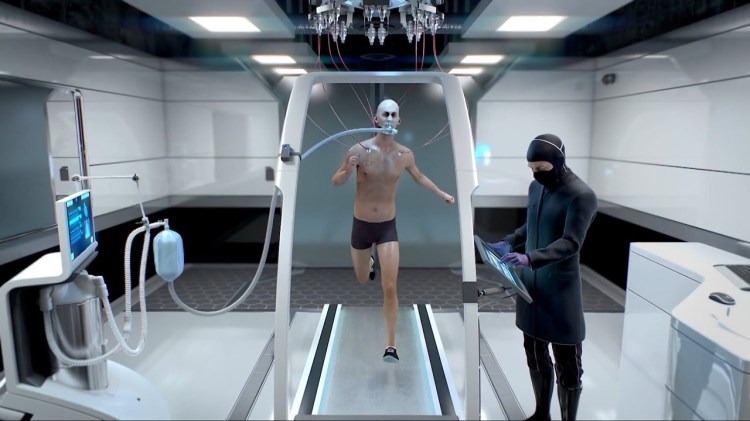This sponsored post is produced by Nvidia.
There’s no shortage of news coverage hitting our screens on a daily basis regarding the exciting, new world of VR gaming. This is especially true since high-end systems, such as HTC Vive and Oculus Rift, became available to gamers with VR-ready PCs earlier this year.
Despite the hardware being out there in the wild, VR remains very much an emergent technology with developers for the platform still trying to find new and innovative ways to take full advantage of this amazing, immersive, new medium.
One company, UK-based nDreams, is working particularly hard to explore the possibilities that VR systems offer to gamers. Its new adventure, The Assembly, has been built from the ground up for VR on Oculus Rift and HTC Vive, and aims to find new ways of engaging the player, while tackling some of the inherent technical challenges that VR can present to a developer.
[youtube https://www.youtube.com/watch?v=P_ywcq0-QxE&w=560&h=315]
In this narrative-driven experience, players become involved in the activities of an underground organization known as the Assembly. The company is carrying out ambitious experiments for the greater good of mankind, but is doing so outside the confines of legal and moral obligations.
The game is played from the perspectives of two distinct protagonists. The first, Madeleine Stone, is a disgraced neuroscientist who is kidnapped by the Assembly and put through a series of rigorous tests to establish her suitability for the program. The second playable character, Cal Pearson, is an existing employee whose experience working with the Assembly is beginning to cause him grave concerns about the nature of the organization. Through a combination of exploration, puzzle solving, and interactions, the player has to discover the nature of the work going on at the Assembly, make judgments about their role in its activities, and test their own personal moral boundaries.

Creating vivid, complex virtual environments like those presented in The Assembly is an enormous challenge to game developers, so nDreams has approached the task in various creative ways to not only minimize problems, but to enhance the experience in terms of intuitive controls, visual fidelity, and dramatic authenticity.
One particularly good example of the developer finding creative solutions to multiple challenges can be found right at the beginning of the game following Madeleine’s kidnapping. As she is wheeled through the Assembly in a wheelchair, she experiences a bewildering array of new sights and sounds, as well as abrupt changes of direction. In order to make sense of all the new sensory information and keep things comfortable for the player, Madeleine slips in and out of consciousness, breaking the opening scenes down into manageable chunks, eliminating the directional changes, and allowing the player to better acclimatize to the new environment. It’s a simple device that provides technical and narrative benefits.
nDreams also deliberately included visual and audio cues that would prompt players to look and move around as much as possible and begin to appreciate that they are inside a fully 360-degree space that they are free to examine in detail.

Players are able to play the game with full freedom of movement and analog control, but a Blink system of movement has also been implemented, so the player can simply identify part of the environment to move to and teleport there. Players can switch between control systems whenever they like, and there are also slower-paced sections incorporated into the early stages of the game to enable players to become accustomed to all these features and find their level of comfort.
VR gaming experiences with the ambition and technical inventiveness of The Assembly are only possible thanks to the vast computational power of the latest wave of high-end gaming GPUs. Nvidia is at the forefront of the VR revolution with its GeForce GTX 10-series GPUs—including the GTX 1080 and GTX 1070—providing enough raw power to manage the stereoscopic images, high framerates, and low-latency motion tracking that are essential to delivering immersive VR experiences. If you’re unsure if you’re ready to dive into VR experiences like The Assembly, be sure to check out the system requirements for VR.
Andy Dyer is Games Editor at Dialect.
Sponsored posts are content that has been produced by a company that is either paying for the post or has a business relationship with VentureBeat, and they’re always clearly marked. The content of news stories produced by our editorial team is never influenced by advertisers or sponsors in any way. For more information, contact sales@venturebeat.com.

